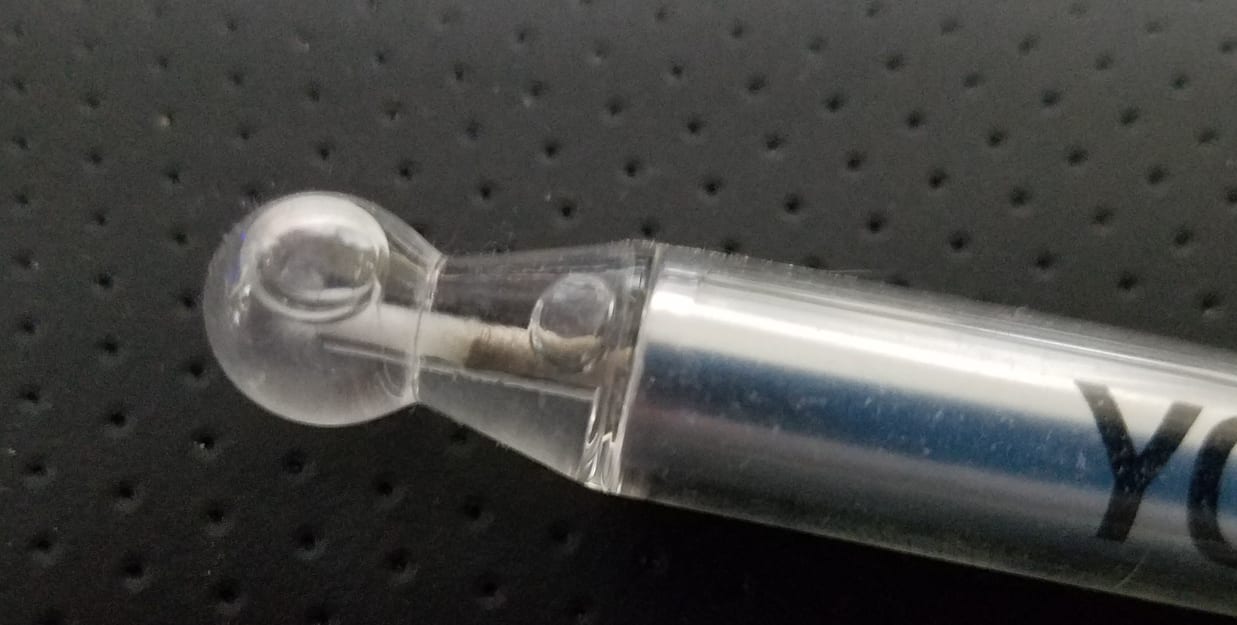Air bubbles are normal in pH sensors and in some reference sensors . They are necessary because the pH sensor is a sealed device with no vent. Without the air bubbles the expansion and contraction of the liquid with temperature changes could cause the glass to break.
. They are necessary because the pH sensor is a sealed device with no vent. Without the air bubbles the expansion and contraction of the liquid with temperature changes could cause the glass to break.
We require that the pH and Reference sensors, or combination sensors, be installed with the tip pointing down at least 15 degrees below the horizon. If the tip is pointed up the air bubbles can migrate to the tip and keep the pH sensitive glass from making contact with the buffer solution inside the sensor.
In addition to bubbles in the tip, air bubbles can get trapped in the electrolyte solution of the reference system. Some reference sensors use thickened KCL or gelled KCL. Some are packed with KCL crystals to create a saturated KCL solution. These air bubbles can cause unstable readings and may make it difficult or impossible to calibrate. In order to reduce or remove the air bubbles, hold the probe firmly by the cable and shake it so that the air bubbles move to the upper end of the probe. If air bubbles are trapped inside the solid KCl crystals, heat the electrode tip in warm water (max. 60°C). This will dissolve some of the crystals and allow the air bubbles to move. While the sensor is still hot, shake the probe as described above. Allow it to cool before reinstalling it in the process.
Related Products & Solutions
-
Differential pH/ORP Sensors
The cation differential pH and ORP sensors were designed for difficult applications where conventional sensors are ineffective. These include measurements such as brine solutions to applications as diverse as electrolysis processes and cheese manufacturing.
-
Industrial pH/ORP Electrodes
The heart of a pH measuring loop is the electrode system. Yokogawa has designed a wide range of electrodes to ensure this heart keeps beating under the most severe conditions.
-
Liquid Analyzers
- Liquid analyzers
- Monitoring process chemistry
- Water quality
- Process optimization and control
-
pH and ORP Analyzers
pH and ORP meters, analyzers and transmitters are used for continuous process monitoring of pH and ORP to ensure water/product quality, monitor effluent discharge, batch neutralization, pulp stock, scrubbers, cooling towers, chemical, water/wastewater treatment and many other applications.
-
pH and ORP Sensors
- pH and ORP sensors
- Proper pH electrode/sensor selection critical for optimal measurement results
- Installation options include retractable, flow thru, immersion, and direct insertion